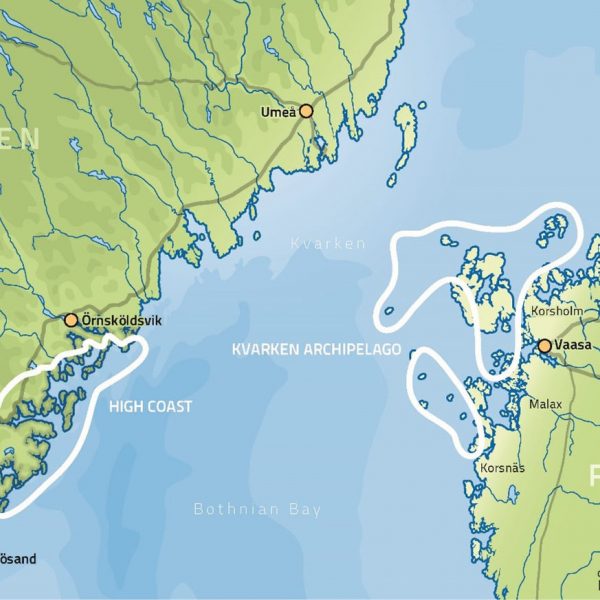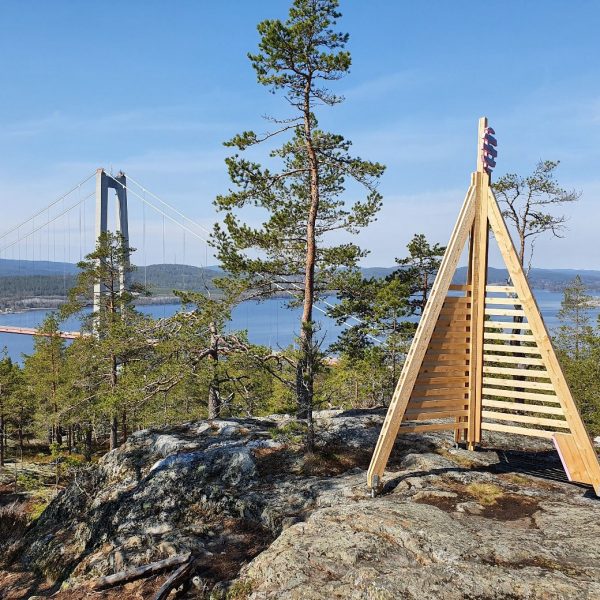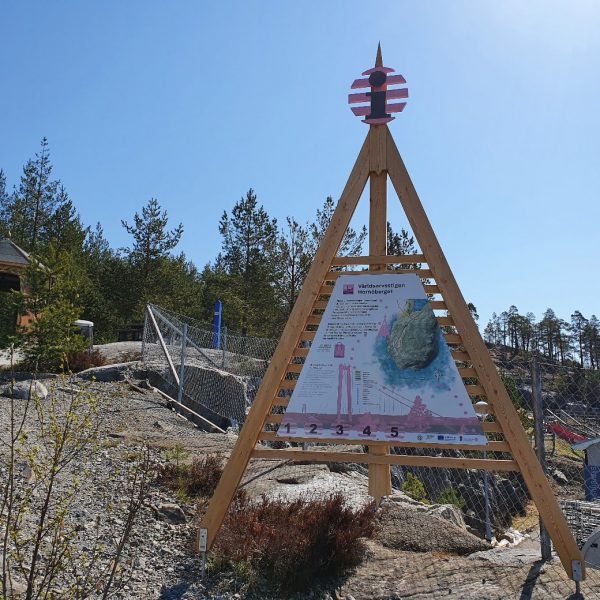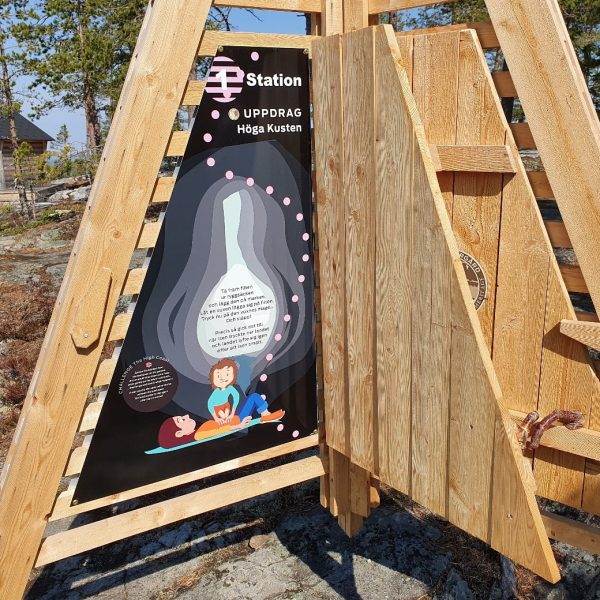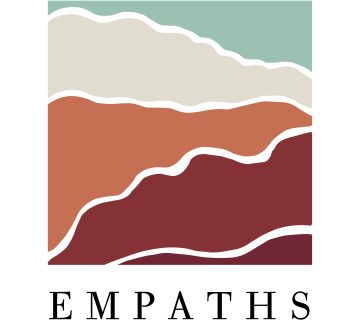The High Coast Kvarken Archipelago WHS has a new interpretive plan, and an interactive trail to engage families with the geology and history.
After many years, the High Coast Kvarken Archipelago World Heritage Site finally has an interpretive plan. It is a challenge to interpret a site of three separate areas situated in two countries with the Baltic Sea in between. The area in Sweden, about 500km north of Stockholm, is roughly 100km along the coast and 30km wide. The areas in Finland are situated about 400km northwest of Helsinki. See map 1.
The High Coast/ Kvarkens archipelago is a world heritage site because this is the best place in the world to experience and understand land uplift following the last Ice Age. Here you can find the world’s highest shoreline at 286m above today’s sea level. This means that in the last 10,500 years the land has risen 286m, a process that is still ongoing at 9mm per year.
But now we have a plan with a clear theme, several subthemes, and appointed places where interpretation shall be developed for target groups. This plan was developed during a Baltic Atlantica project partly funded by the EU.
The development of this plan included creating one interpretive piece in each country. In Sweden, we made an interactive path using low technology and a high focus on interactivity. The target group for this particular site was families. We wanted the whole family to be active along the path and that they worked together.
You start by borrowing a rucksack at the hotel nearby with some things you will need along the path. There are five stops with information panels. Every stop gives you first some background and then asks you to toss a coin to select one of two tasks. The tasks are about either the High Coast or the Kvarken archipelago.
One of the stops explains why the land is rising in this area, which is the reason for the world heritage site designation. Visitors should be able to understand the enormous weight of the glacier that pressed down the land – when it melted away and the pressure was released, the land bounced back up again. This process is still ongoing. The group is asked to get one of the adults to lie on the ground (a blanket is supplied in the rucksack) and then the children in the group are the glacier and press the adult’s tummy down. When they let the pressure go, the tummy – just like the land – will bounce back up again!
We also wanted to address more philosophical questions, such as the reasoning behind world heritage sites. Why do we preserve places? What do we want to leave behind for future generations? In this case, one of the tasks is to leave a message to other visitors in a little book. Amazingly the messages so far are impressive: “Don’t be so egoistic, keep your friends also in the storm”; “Shared happiness is double happiness”; “All people you meet have problems you don’t know anything about. So, be kind”. (These translations have been taken from images 4 and 5.)
The process to a successful interactive path
To ensure that the tasks would be understood and appreciated by the whole family we made a test version. We originally planned more tasks to every stop but the test made us realise that it was too complicated. It also showed that some tasks wouldn’t work. The feedback was very helpful in modifying the tasks and ending up with really good interpretation for our site.
For more background and the whole plan see here: https://highcoastkvarken.org/document/nature-interpretation-plan-for-high-coast-and-kvarken-archipelago/ or https://highcoastkvarken.org/wp-content/uploads/High-Coast-Kvarken-Archipelago-internpretation-plan.pdf.
Anna Carlemalm is the manager at Naturum Höga Kusten, a visitor centre in the heart of High Coast Kvarken Archipelago World Heritage Site, 10km from Skuleskogen National Park on the east coast of Sweden.
Anna can be contacted at: Anna.Carlemalm@lansstyrelsen.se.
To cite this article: Carlemalm, Anna (2021) ‘Don’t hold your breath! – Interpreting land uplift bounce back with your own tummy’ in Interpret Europe Newsletter 4-2021, pg.18-19
Available online: https://interpret-europe.net/wp-content/uploads/2021/12/Newsletter-Winter-2021.pdf

